Eyes of the Earth 1996 & 2000

The oldest of sciences is astronomy, born from our fascination with looking at the night sky and trying to understand the repeated motions of the sun, moon, planets and stars. Bone carvings as old as 30,000 years seem to be notations of the moon’s waxing and waning. Stonehenge in the UK, Cuiquilco in Mexico, the Woodhenge at Cahokia, Missouri and the numerous medicine wheels across North America are man’s physical records of the movements in the heavens and his attempt to give understanding to what was happening above.
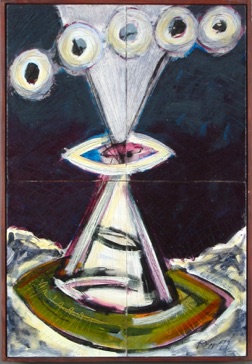
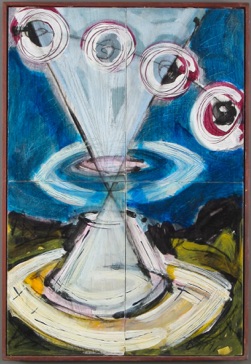
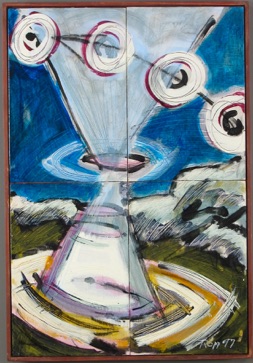
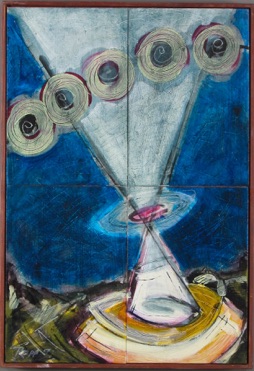
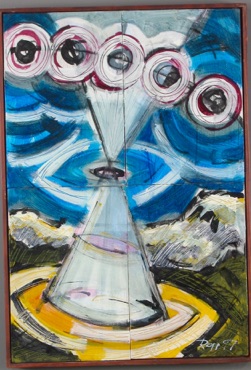
Eye of the Earth 1 thru 5 1997
Acrylic on Masonite
29” x 20”
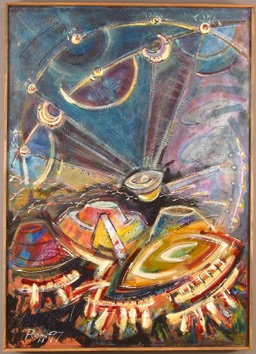
Eye of Cuiquilco 1997
Acrylic on Masonite
49” x 36”
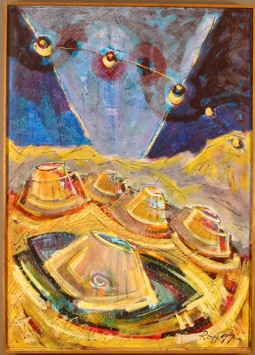
Large Array 1997
Acrylic on Masonite
49” x 36”

Persistence of Form 1997
Acrylic on Masonite
49” x 36”
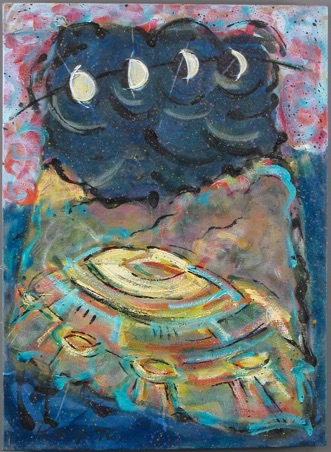
Phases 3 1996
Acrylic on Canvas
30” x 22”
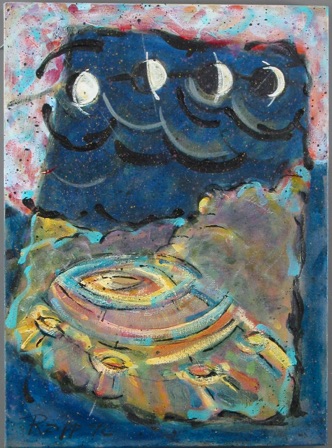
Phases 4 1996
Acrylic on Canvas
30” x 22”
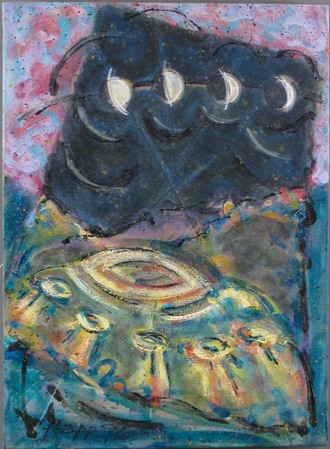
Phases 5 1996
Acrylic on Canvas
30” x 22”
There are many examples of stone circles made by indigenous cultures to record the observed movements of the stars and planets. The actual heavenly events are given a physical representation from which a virtual explanation can be derived. This may be a precursor to both myth and scientific practice.
In 1974, Artist, Nancy Holt presented a work at New York’s ArtPark called ‘Hydra’s Head’. It referenced native myths that called reflective puddles on the ground as ‘Eyes of the Earth’.
All of our astronomical creations, including visual and radio telescopes, as well as our own eyes can be imagined as the Eyes of the Earth.
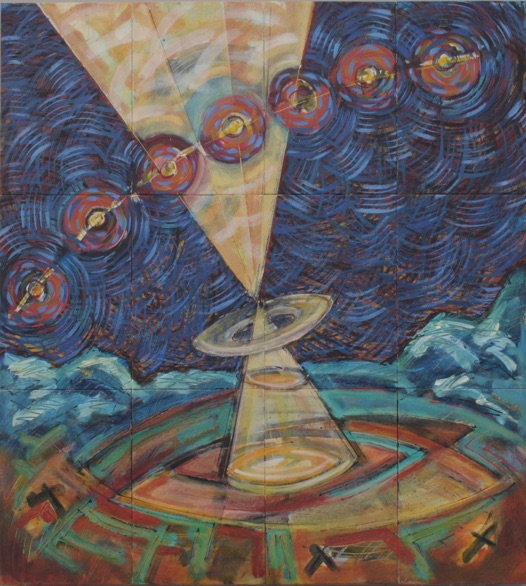
Grand Eye 2000
Acrylic on one dozen masonite panels 14" x 9.5” each.
42” x 38” x 2 1/2” overall.
The movement of an astronomical object is noted upon the ground in the way most medicine wheels grew.